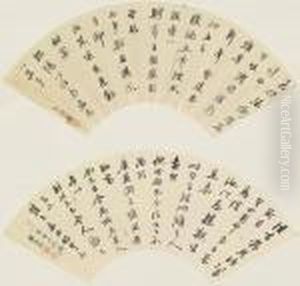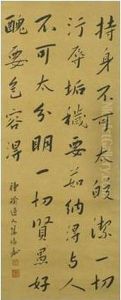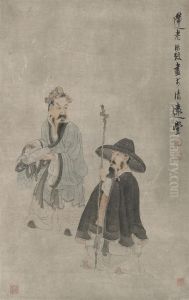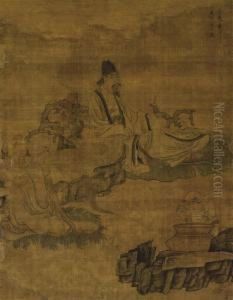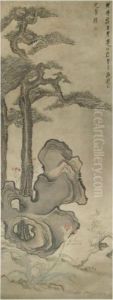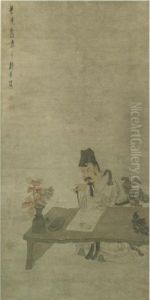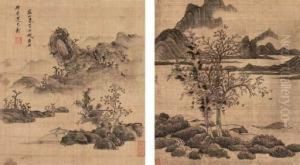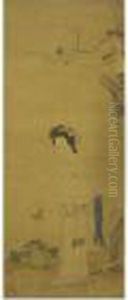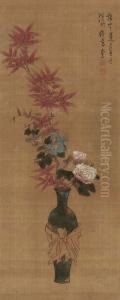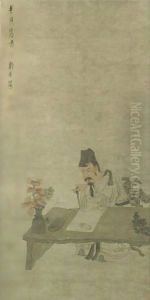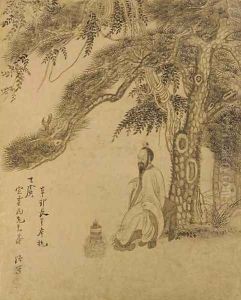Chen Hongshou Paintings
Chen Hongshou was a notable Chinese painter and illustrator during the late Ming and early Qing dynasties. Born in Zhuji, Zhejiang province, his style name was Zhanghou, and his sobriquets were Laolian, Fuchi, Yunmenseng, Huichi, Chiheshang and Huiseng. He once trained under Lan Ying, and developed a personal style that was characterized by exaggerated figures and dramatic compositions. His works exhibit a unique blend of traditional techniques with an individualistic twist, often imbued with a sense of melancholy and introspection, which was reflective of the tumultuous times during the Ming-Qing transition.
Chen was proficient in painting figures, landscapes, and flowers. His figure paintings often carried a whimsical or quirky quality, with elongated limbs and expressive, almost caricature-like faces. This distinctive style has been highly regarded and influential, with some of his works being considered masterpieces of 17th-century Chinese art. Despite his skill, Chen's life was marked by hardship and disappointment. He witnessed the fall of the Ming Dynasty and lived through the chaotic period that led to the establishment of the Qing Dynasty. The political and social upheaval of the era had a profound impact on his art and may have contributed to the sense of disillusionment and nostalgia that pervades his work.
In addition to his painting, Chen Hongshou also left behind a legacy as a talented calligrapher and seal-carver. He was part of a network of literati, scholars who engaged in artistic pursuits and shared a disdain for the corruption they perceived in the government of their time. His work was not only a form of artistic expression but also a vehicle for scholarly rebellion and cultural criticism. After his death, Chen's style continued to influence later generations of artists, and his paintings remain highly valued for their unique contribution to the canon of Chinese art history.

